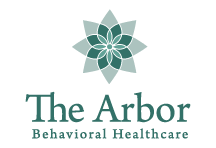Addiction to alcohol and drugs is a widely complex disease that affects millions of Americans. Most people seeking addiction treatment turn to an inpatient or outpatient addiction program. These programs vary in length but are typically 30, 60 or 90 days. Once released from this form of treatment, many newly sober people are left to their own devices. Unfortunately this can leave them prone to relapse. Research conducted by the National Institute on Drug Abuse (NIDA) concluded that the typical 30 day treatment period is not enough for most individuals. Long-term sobriety rates are greatly improved when a 12-month aftercare monitoring and support program is in place. As an increasing number of people seek and receive substance abuse treatment, the population of people who require additional support to maintain their newly found sobriety also rises. Getting sober is the first challenge. Many find that they require for an extended period of ongoing support to remain sober. Fortunately there are several excellent choices for post-rehab support that can ease the transition from the high control environment of a drug treatment center to full independence.
Getting sober is just the beginning
Talk to anyone in recovery from addiction, and you will find most find the first year of sobriety to be a challenging one. Most inpatient and residential programs last 30-90 days, leaving people to face the majority of hurdles in early recovery alone. Yet a full year in a residential treatment program can be beyond a family’s economic resources. It is possible to structure a 12-month aftercare treatment and support plan that reintroduces the person to life, and supports their efforts to stay sober. Below you will find several common options worthy of your research. Ideally, your treatment provider is talking to you about for post treatment needs.
Short-term treatment is not enough for most to succeed
Many treatment centers that offer rehabilitation include a variety of programs, such as outpatient treatment, inpatient or residential program, group therapy, medication, one-on-one therapy, and other potential treatment methods. The need for support doesn’t end when one leaves these programs. Aftercare monitoring gives the individual more help after they have completed a program, and it also provides a safety net. This can help prevent a relapse, and help the person who is experiencing a relapse get back on track quickly.
The benefit of aftercare monitoring
The goal of an aftercare program is to transition the recovering person from the tight control and high structure of the original treatment program to full independence. Aftercare is typically a series of programs that help addicts continue to work with the underlying issues that cause addiction. They also support the learning new coping skills. Some individuals need help mastering basic life skills such as cooking, balancing a checkbook, or acquiring and holding a job. Additionally, an aftercare program provides accountability which aids in deterring relapse. Participants reintegrate themselves into their families and local community in new and healthy ways. Many clients also report they form friendships with others who are in a similar place in their recovery. This provides an informal support network. The immersion into a lifestyle that includes accountability to others allows for quick discovery of a relapse when it happens, and is easier to undo.
Treatment for addiction can be costly
One of the advantages of an extended aftercare program is that costs are generally lower than inpatient or intensive outpatient care. As the client moves from high structure to independence, each phase gets less expensive. In addition, the individual can return to work, providing much needed economic relief to the family. It is important to note that aftercare is generally far less expensive than relapse.
Options for aftercare support
- An Intensive Outpatient Program (IOP) is highly effective way to support someone fresh out of an inpatient treatment center. It provides accountability and structure that the newly sober individual often needs to support sobriety. Clients are usually attend sessions 3-4 nights per week and treatment can last 8-12 weeks.
- Extended care programs are a relatively new entry into the realm of addiction treatment. These inpatient programs help bridge the gap from the highly structured accountability of inpatient hospitalization to the independence of sober living. These residential programs are lower in cost than inpatient programs and offer life skills training and support the creation of new coping skills. Extended Care is a great option for those suffering from a dual diagnosis – both addiction and mental health disorders.
- A sober living home is a residential setting that offers more independence than other aftercare options. They offer support and accountability to help the individual stay sober. They are especially helpful for building a strong peer support network.
- A relapse prevention program is a non-residential program that can be used in conjunction with a sober living program, or undertaken after participation in an alcohol or a drug treatment program. A personalized relapse prevention plan is created so the addict, and those who support him or her, know exactly what steps to take when a relapse occurs. This can help the person get back on track quickly. Arbor Advocacy is a Relapse Prevention Program.
The Continuum of Care at Arbor Behavioral Healthcare offers addiction treatment programs that support the individual wherever they are on their journey to sobriety. A customized aftercare program is designed to meet the needs of the individual, while remaining under the supervision of the same team. Contact us today for a confidential assessment to help choose the best aftercare program for you or your loved one.


